Questions From The Hydrangea Happy Hour
Questions From The Hydrangea Happy Hour
There was a great group of people on the Hydrangea Happy Hour last Friday, and we didn’t have time to get to all of the questions. I promised to answer the rest here, in the blog. By the way, the photos here are for illustration, not posted by the people who asked these questions.
Q. One of my blue mopheads ended up with 2 flowers blooming, however they’re already turning brown already as if too dry which can’t be after all this rain this year. What’s happening?
A. Blue mopheads will brown out for a couple of reasons. The most common is when the plants are being grown in full sun. When these flowers are hit by the strong sunlight from 11 AM to 3 PM, the flowers wilt a bit because the plant can’t take up water fast enough to replace what’s being lost through the petals and leaves. Even if the soil is moist, mopheads wilt in full sun, and after a few days of this the flowers will turn brown.
Secondly, if the plants were given an application of a synthetic fertilizer, aluminum sulfate, or weed killer recently, those can brown flowers. Sometimes this happens when a nearby lawn is fertilized or treated.
If the shrubs are in full sun, you’d be wise to move them this fall to a place where they get early morning or very late afternoon sun.
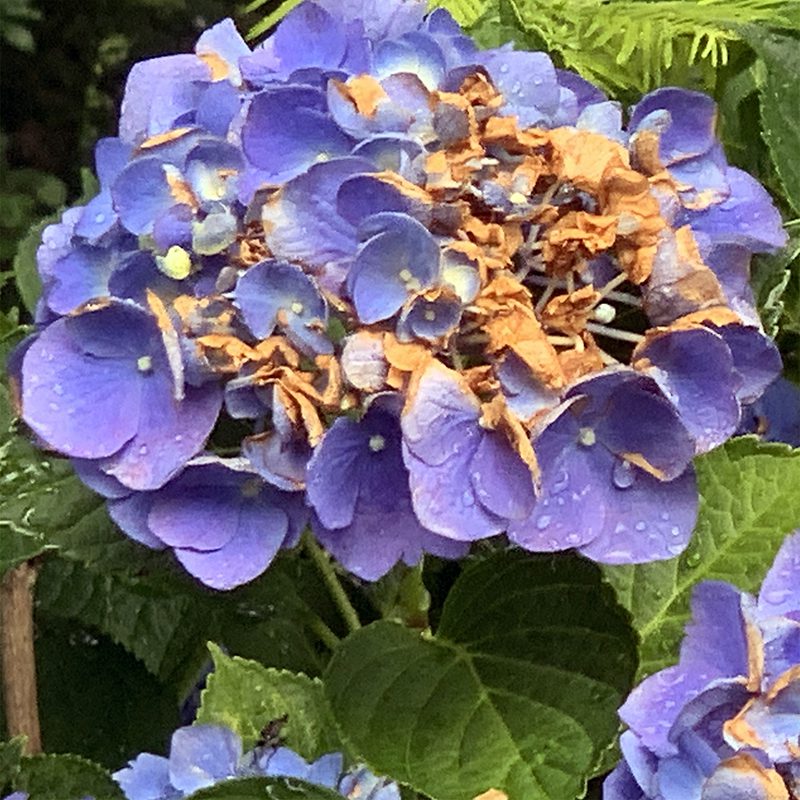
Q. A few years ago, I bought 4 “Let’s Dance” – all planted along the front of my house with the same sun, etc. Two of them are beautiful, one died, and one has remained tiny. What kind of variables should I be looking at for more consistent results?
A. First of all, “Let’s Dance” is a series of hydrangeas from Proven Winners. There are some that stay short, such as Let’s Dance Sky View and others that grow taller, such as Let’s Dance Starlight. Some are mopheads and some are lacecaps. I’m assuming that your shrubs were all the same variety, but you might check the tags if you still have them.
That said, even plant that are the same variety can vary widely in how they grow and behave, depending on the conditions where they are planted. If one was placed in soil that is more compact than the others, that plant will be shorter. If one plant gets more water from the irrigation system, that shrub will grow taller. (Note that sometimes plants that are at the end of soaker hoses or drip systems aren’t getting as much as those that are closer to the water supply.) Shrubs that are in more sun are likely to be in drier soil than those that are in shade.
A plant that’s getting fertilizer from a nearby lawn might grow larger as a result. Shrubs that are in more shade often get taller as they stretch toward the light, and those planted in soil that is more organically rich (amended with compost etc) will also grow better.
So check the soil in the various spots to see how compact it is. Check after your watering system has run and dig into the soil in various places to see just how moist things are. Watch to see if lawn products are being washed or kicked into the Hydrangea bed. And amend regularly around all Hydrangeas by applying an inch or compost on the top of the soil well beyond the drip-line, doing this before you put mulch down for the season.
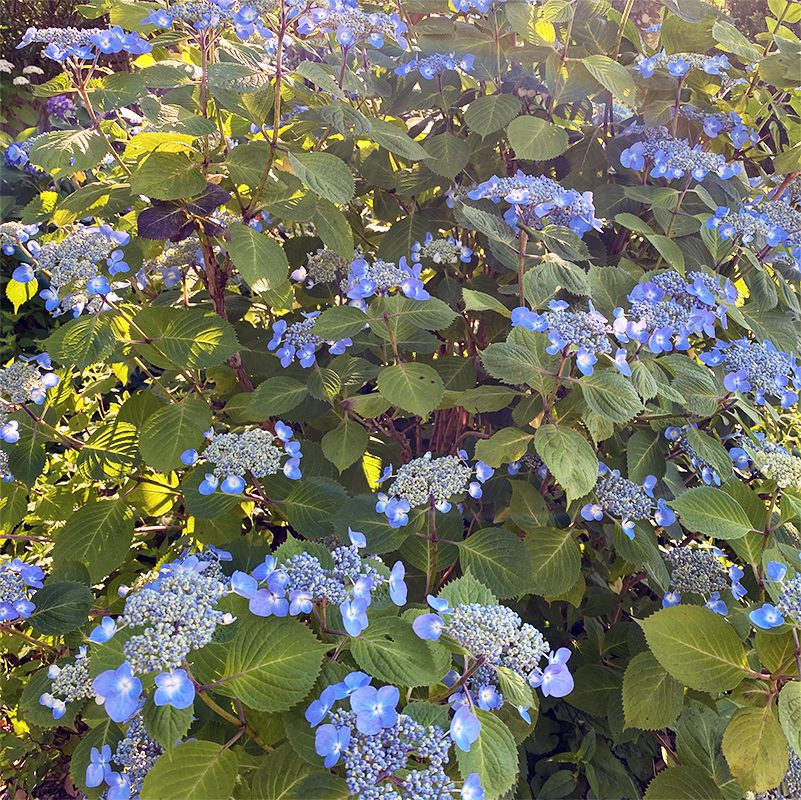
Q. Four or five years ago I ordered hydrangeas from famous grower in Oregon. Unusual varieties of macrophylla . I planted in early morning sun but not more than three hours. Maybe some in late pm. They bloomed late, remain small not more than 20″. Is there anything I can do to make them grow bigger I have added compost, I have added holly tone. But the sparse blooms are very pretty.
A. See the previous question, since some of these situations such as compact soil might apply to your plant. Also, consider that these might have been mislabeled, and could just be a smaller variety. (It happens…) If you’ve fertilized with Holly-tone, applied compost around these plants, and have watered them deeply once a week, they should have put on some significant growth in their third year. Maybe try moving one of them to another location, and loosen the soil there in a wide area first with a garden fork, to see if that makes a difference.
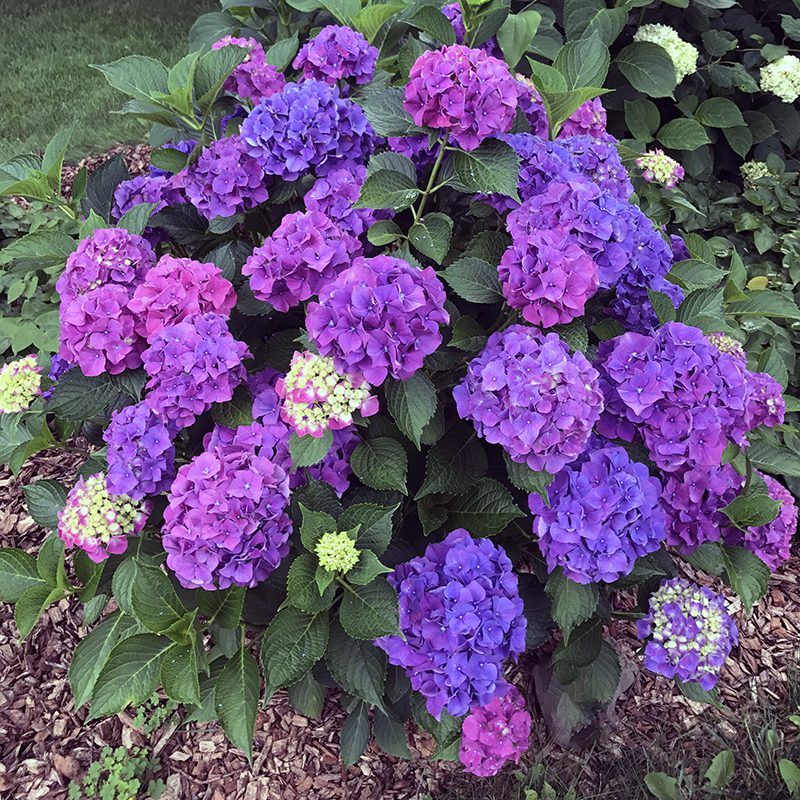
Q. What are some hydrangeas that don’t grow too large, in addition to Wee White?
A. Here are some that don’t grow above 4 feet tall…some of these stay under 3 feet. Mini Mauvette, Limetta, Pop Star, Let’s Dance ¡Arriba!, Let’s Dance Sky View, Let’s Dance Rhythmic Blue, Tiny Tuff Stuff, Fire Light Tidbit, and Tiny Quick Fire.
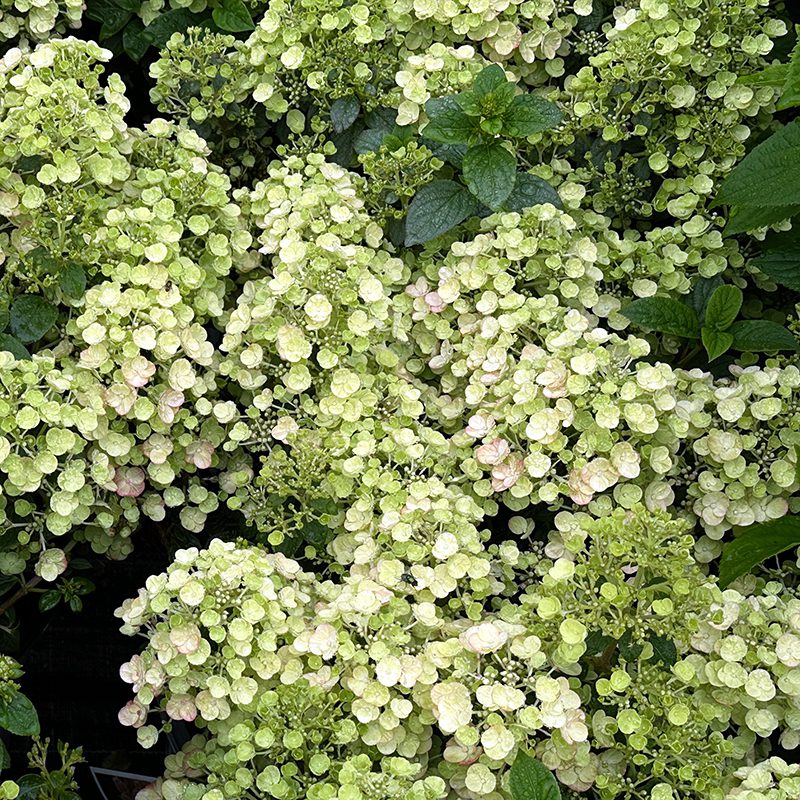
Q. If one can’t make it to the festival, how may arrangements be made to visit C.L.’s gardens?
A. Thanks for your interest! Most years I am only open during the Cape Cod Hydrangea Festival. Occasionally, however, I open my gardens in the fall. I don’t know yet if that will happen this year, but if so I will post it on GardenLady.com on the events page.
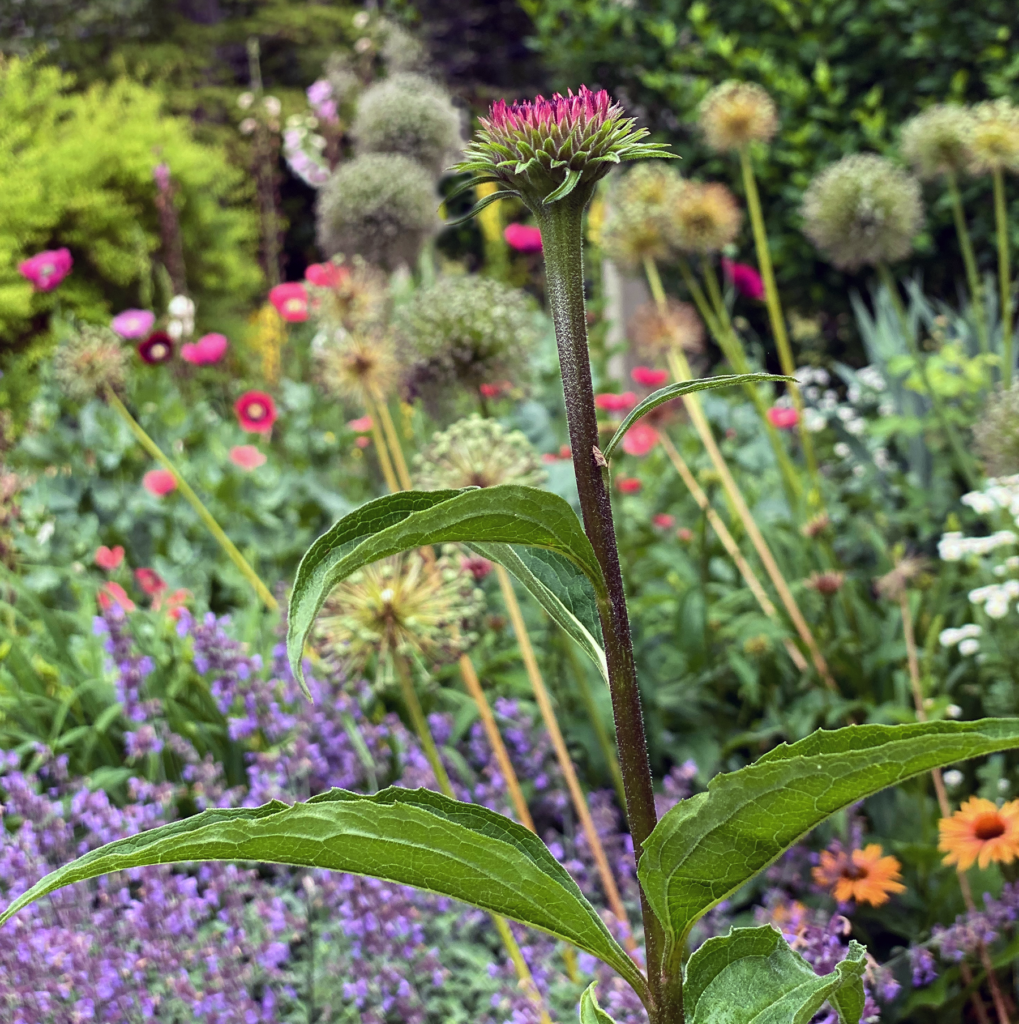
Q. Can Plantskydd be used on flowering trees?
A. Yes, Plantskydd can be used on trees. I’ve found it very helpful in keeping the deer away from my small crabapples! Use the liquid and spray it right on the foliage and trunk.
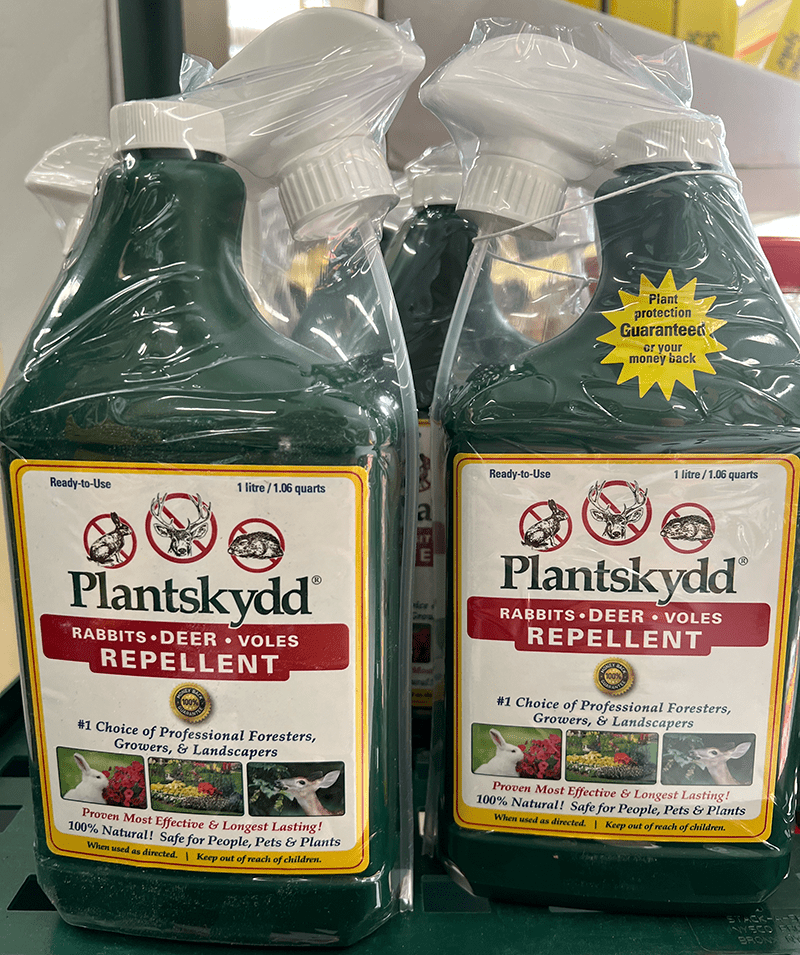
Q. Any suggestions for a husband who, every year, “trims” my mopheads?!?! Is there a Plantskydd for husbands?
A. Ha! Love your sense of humor. I have often called the mophead hydrangeas a can-this-marriage-be-saved-plant. 😉 May “The Force” be with you!
2 Comments
Leave a Comment
Subscribe To Our Newsletter
Sign up for our weekly email about sales and events.

Why isn’t my strawberry vanilla hydrangea tree not blossoming this year? It did last year (the year it was planted). It’s growing new green leaves but they are still very small
Make sure it’s in full sun, and nothing has damaged the trunks/main stems over the winter. Be sure it’s gotten a deep soaking once a week. If you live on Cape Cod, bring a picture into the garden center and show it to Dave Fields or C.L. Fornari.